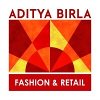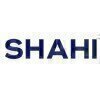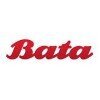Filter interviews by
Page Industries Interview Questions and Answers
32 Interview questions
Speedo is a leading swimwear brand known for its innovative designs and performance-focused products for competitive and recreational swimmers.
Founded in 1914 in Australia, Speedo has a long history in swimwear.
The brand is renowned for its high-performance swimsuits, like the Fastskin series, used by Olympic athletes.
Speedo also offers a range of swim accessories, including goggles, caps, and training aids.
The br...
To grow this category, I plan to enhance customer engagement, optimize product offerings, and leverage data-driven strategies.
Conduct market research to identify emerging trends and customer needs, such as introducing eco-friendly products.
Implement targeted marketing campaigns that resonate with specific demographics, like social media ads for younger audiences.
Enhance customer experience through personalized ser...
ROI, or Return on Investment, measures the profitability of an investment relative to its cost.
ROI = (Net Profit / Cost of Investment) x 100. For example, if you invest $1000 and earn $1200, ROI = (($1200 - $1000) / $1000) x 100 = 20%.
A positive ROI indicates a profitable investment, while a negative ROI suggests a loss.
ROI can be used to compare the efficiency of different investments. For instance, if Investment...
Effective product sales involve understanding customer needs, strategic marketing, and building strong relationships.
Identify target audience: Understand who your ideal customers are, e.g., demographics, preferences.
Develop a unique value proposition: Clearly articulate what makes your product stand out, e.g., superior quality or price.
Utilize multiple sales channels: Leverage online platforms, retail, and direct ...
Our product quality is exceptional, ensuring reliability, performance, and customer satisfaction through rigorous testing and standards.
We adhere to industry standards, such as ISO 9001, to maintain high-quality benchmarks.
Our products undergo extensive testing phases, including stress tests and user feedback sessions.
We utilize high-grade materials, ensuring durability and longevity, as seen in our flagship produ...
Product comparity involves evaluating and contrasting products to determine their similarities and differences for informed decision-making.
Identify key features: Compare specifications like size, weight, and functionality. Example: Comparing smartphones based on camera quality.
Assess pricing strategies: Analyze how pricing affects perceived value. Example: Luxury brands vs. budget brands in fashion.
Evaluate custo...
Facing upcoming challenges requires proactive planning, adaptability, and strong team collaboration to ensure success.
Identify potential challenges early, such as supply chain disruptions, and develop contingency plans.
Foster open communication with the team to encourage feedback and innovative solutions.
Stay informed about industry trends and competitor strategies to anticipate market changes.
Implement training p...
To increase sales, focus on customer service, marketing strategies, and product offerings.
Improve customer service to increase customer satisfaction and loyalty
Implement effective marketing strategies to reach a wider audience
Offer promotions and discounts to attract new customers and retain existing ones
Analyze sales data to identify trends and adjust strategies accordingly
A bull market is a financial market characterized by rising prices and investor optimism.
Bull markets typically occur when the economy is strong and unemployment is low.
Investors are confident in the future of the market and are more willing to buy stocks.
Bull markets can last for months or even years, leading to significant gains for investors.
Examples of bull markets include the dot-com bubble in the late 1990s ...
A bear market is a financial market characterized by declining prices and investor pessimism.
Occurs when stock prices fall by 20% or more from recent highs
Investors are generally pessimistic about the market's future performance
Can last for months or even years
Examples include the Great Recession of 2008 and the Dotcom Bubble burst in 2000
Page Industries Interview Experiences
63 interviews found
(2 Questions)
- Q1. What is current role and how can you justify your fit in jockey
- Ans.
I am currently working as a Production Manager at XYZ Company, overseeing all aspects of production processes.
I have experience in managing production schedules, coordinating with different departments, and ensuring quality control.
I have successfully implemented cost-saving measures in my current role, resulting in a 10% reduction in production expenses.
I have strong leadership skills and have effectively managed a te...
- Q2. Technical knowledge about textiles,costings, buying process in your organization
I appeared for an interview in Apr 2025, where I was asked the following questions.
- Q1. Company related question
- Q2. Product related question
Interview Preparation Tips
English,maths , related
Our society technology good or bad
(1 Question)
- Q1. Basis And technical and system like 5s ,lean management,
(1 Question)
- Q1. Self introduction, family
I applied via Referral and was interviewed in Aug 2024. There was 1 interview round.
(2 Questions)
- Q1. How to increase sale .
- Ans.
To increase sales, focus on customer service, marketing strategies, and product offerings.
Improve customer service to increase customer satisfaction and loyalty
Implement effective marketing strategies to reach a wider audience
Offer promotions and discounts to attract new customers and retain existing ones
Analyze sales data to identify trends and adjust strategies accordingly
- Q2. Salary discussion
I appeared for an interview in Mar 2025, where I was asked the following questions.
- Q1. ROI how it's calculate
- Ans.
ROI, or Return on Investment, measures the profitability of an investment relative to its cost.
ROI = (Net Profit / Cost of Investment) x 100. For example, if you invest $1000 and earn $1200, ROI = (($1200 - $1000) / $1000) x 100 = 20%.
A positive ROI indicates a profitable investment, while a negative ROI suggests a loss.
ROI can be used to compare the efficiency of different investments. For instance, if Investment A ha...
- Q2. Current working style and regarding that might be questioned asked by the candidate
Interview Preparation Tips
(5 Questions)
- Q1. Types of derivative
- Ans.
Derivatives are financial instruments whose value is derived from an underlying asset or group of assets.
Types of derivatives include options, futures, forwards, and swaps.
Options give the holder the right, but not the obligation, to buy or sell an asset at a specified price before or on a specified date.
Futures are contracts to buy or sell an asset at a future date for a price agreed upon today.
Forwards are similar to...
- Q2. Tell me Types of swap
- Ans.
Types of swaps include interest rate swaps, currency swaps, and commodity swaps.
Interest rate swaps involve exchanging fixed interest rate payments for floating rate payments.
Currency swaps involve exchanging principal and interest payments in one currency for another currency.
Commodity swaps involve exchanging cash flows based on the price of a commodity.
Other types of swaps include equity swaps, credit default swaps,...
- Q3. Tell me types of option
- Ans.
Types of options include call options and put options.
Call options give the holder the right to buy an asset at a specified price within a specific time frame.
Put options give the holder the right to sell an asset at a specified price within a specific time frame.
- Q4. What is bull market
- Ans.
A bull market is a financial market characterized by rising prices and investor optimism.
Bull markets typically occur when the economy is strong and unemployment is low.
Investors are confident in the future of the market and are more willing to buy stocks.
Bull markets can last for months or even years, leading to significant gains for investors.
Examples of bull markets include the dot-com bubble in the late 1990s and t...
- Q5. What is bear market
- Ans.
A bear market is a financial market characterized by declining prices and investor pessimism.
Occurs when stock prices fall by 20% or more from recent highs
Investors are generally pessimistic about the market's future performance
Can last for months or even years
Examples include the Great Recession of 2008 and the Dotcom Bubble burst in 2000
Skills evaluated in this interview
(2 Questions)
- Q1. Adaptive Communication skills
- Q2. Sop
Interview Preparation Tips
(2 Questions)
- Q1. Fabric process and types
- Ans.
Fabric process and types involve various methods of creating and categorizing different types of fabrics.
Fabric process includes spinning, weaving, knitting, dyeing, printing, and finishing
Types of fabrics include natural fibers like cotton, silk, wool, and linen, as well as synthetic fibers like polyester, nylon, and acrylic
Other types of fabrics include blends like cotton-polyester, and specialty fabrics like denim, ...
- Q2. Printing types and process types after printng
- Ans.
There are various printing types such as offset, digital, screen printing, and process types like CMYK, Pantone, etc.
Printing types include offset, digital, screen printing, etc.
Process types after printing include CMYK, Pantone, etc.
Offset printing is commonly used for large quantities, while digital printing is more suitable for small runs.
CMYK is a four-color printing process used for full-color printing, while Pant...
Skills evaluated in this interview
(4 Questions)
- Q1. HIRA process, Hazard control process
- Q2. Job safety analysis
- Q3. Chemical safety
- Q4. Electrical safety
- Q1. Are you familiar with Speedo?
- Ans.
Speedo is a leading swimwear brand known for its innovative designs and performance-focused products for competitive and recreational swimmers.
Founded in 1914 in Australia, Speedo has a long history in swimwear.
The brand is renowned for its high-performance swimsuits, like the Fastskin series, used by Olympic athletes.
Speedo also offers a range of swim accessories, including goggles, caps, and training aids.
The brand e...
- Q2. This is a sports brand. How do you manage it, considering your background in the hosiery and garments industry?
- Ans.
Leveraging my experience in hosiery and garments, I can effectively manage sales in the sports brand sector by applying transferable skills.
Understanding consumer behavior: In hosiery, I learned to analyze customer preferences, which can be applied to sports apparel.
Product knowledge: My background in garments equips me with insights into fabric technology, essential for sportswear performance.
Sales strategies: I have ...
- Q3. Do you have any plans for how to grow this category?
- Ans.
To grow this category, I plan to enhance customer engagement, optimize product offerings, and leverage data-driven strategies.
Conduct market research to identify emerging trends and customer needs, such as introducing eco-friendly products.
Implement targeted marketing campaigns that resonate with specific demographics, like social media ads for younger audiences.
Enhance customer experience through personalized service ...
- Q4. This is the season. Brand how to manage the rest of the months after going out of season.
Top trending discussions






Page Industries Interview FAQs
The duration of Page Industries interview process can vary, but typically it takes about less than 2 weeks to complete.
Tell us how to improve this page.
Page Industries Interviews By Designations
- Page Industries Store Manager Interview Questions
- Page Industries Senior Sales Officer Interview Questions
- Page Industries Sales Officer Interview Questions
- Page Industries Area Sales Manager Interview Questions
- Page Industries Senior Area Sales Manager Interview Questions
- Page Industries Executive Interview Questions
- Page Industries Data Entry Operator Interview Questions
- Page Industries Senior Electrician Interview Questions
- Show more
Interview Questions for Popular Designations
Overall Interview Experience Rating
based on 64 interview experiences
Difficulty level
Duration
Interview Questions from Similar Companies
Page Industries Reviews and Ratings
based on 1.3k reviews
Rating in categories
|
Senior Sales Officer
323
salaries
| ₹4.7 L/yr - ₹10.3 L/yr |
|
Sales Executive
271
salaries
| ₹3.3 L/yr - ₹11.1 L/yr |
|
Sales Officer
227
salaries
| ₹3.4 L/yr - ₹8 L/yr |
|
Store Manager
153
salaries
| ₹2 L/yr - ₹5.1 L/yr |
|
Senior Officer
77
salaries
| ₹3.8 L/yr - ₹8.1 L/yr |

Aditya Birla Fashion and Retail

Shahi Exports

Raymond Lifestyle Limited

Trident Group
- Home >
- Interviews >
- Page Industries Interview Questions













